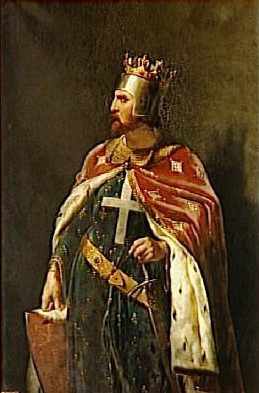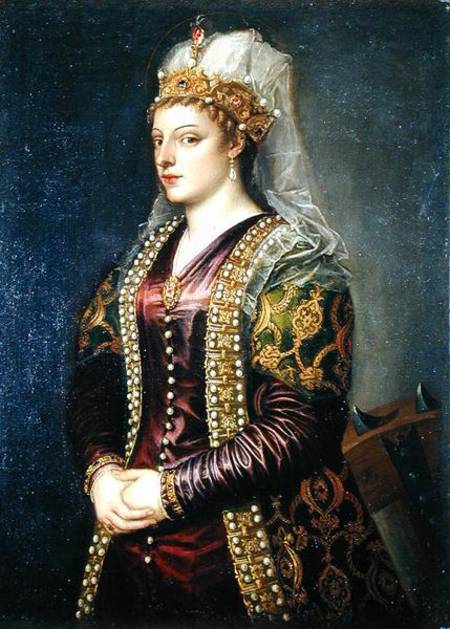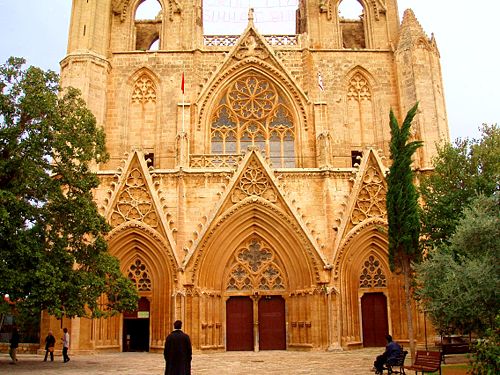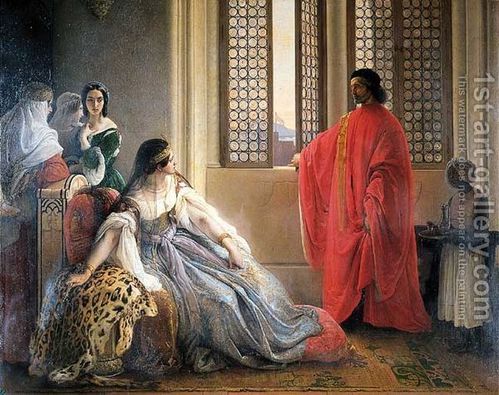The Lusignan dynasty Latin Cyprus
On the site
http://www.qantara-med.org/ Monday, May 17, 2010
How To Build A Trailer Ontario
The Lusignan dynasty Latin Cyprus
Cyprus was conquered by the Romans between May 6 and June 5, 1191, during the Third Crusade following the capture of Jerusalem by Saladin in 1187. Some ships of the fleet of Richard the Lion Heart, having accidentally stranded shore of the island, the Byzantine despot Local, Isaac Komnenos Doukas, who had made independent of Constantinople, claimed to get their hands on ships on behalf of the right to wreck, it seems, which led to military intervention.
As Richard put it end to several centuries of Greek Cyprus. Desiring to continue his expedition, can not leave a sufficient garrison on the island, the king yielded to the Templars for 100,000 bezants, including 40,000 paid immediately. To pay the remainder, the College conducted an oppressive tax policy that led to riots, which led him to make Island to Richard. The latter sold it again in May 1192 the last king of Jerusalem recently dethroned, Guy de Lusignan, from an illustrious family of Poitou, who declared himself a vassal of Plantagenet.
Guy Lord of Cyprus, sent his former Frankish kingdom of Jerusalem and the Syrian Christians to ensure the presence in Latin an island where most inhabitants were Greek, with the exception of a few Italian merchants counters. They were joined by knights from the West with the Crusades Knights were given fiefs taken on the lands of the former despot, the aristocracy and the Church Greek. A feudal Latin was thus established. As Richard put it end to several centuries of Greek Cyprus. Desiring to continue his expedition, can not leave a sufficient garrison on the island, the king yielded to the Templars for 100,000 bezants, including 40,000 paid immediately. To pay the remainder, the College conducted an oppressive tax policy that led to riots, which led him to make Island to Richard. The latter sold it again in May 1192 the last king of Jerusalem recently dethroned, Guy de Lusignan, from an illustrious family of Poitou, who declared himself a vassal of Plantagenet.
 Guy's brother, Amaury II, former constable of the kingdom of Jerusalem, succeeded him in 1194. In 1195, he made a kingdom of Cyprus, getting the royal crown of the Holy Roman Emperor, while Richard, imprisoned upon his return from crusade, had to relinquish its suzerainty. The monarch put in place institutions gradually inspired both those of the kingdom of Jerusalem and the old Byzantine administration.
Guy's brother, Amaury II, former constable of the kingdom of Jerusalem, succeeded him in 1194. In 1195, he made a kingdom of Cyprus, getting the royal crown of the Holy Roman Emperor, while Richard, imprisoned upon his return from crusade, had to relinquish its suzerainty. The monarch put in place institutions gradually inspired both those of the kingdom of Jerusalem and the old Byzantine administration. The Roman Church established its structures in the Latin Kingdom, which created a situation unique because they must coexist with those of the Greek background. The pope created in 1196 the archbishopric of Nicosia and the three suffragan bishoprics of Paphos, Limassol and Famagusta, the Orthodox Church for its remaining totally independent with the archdiocese and its fourteen suffragan bishoprics. Shortly after, in the early thirteenth century
was undertaken the construction of four Latin cathedrals, he remains only the St. Sophia Cathedral in Nicosia, Famagusta cathedral and those of Paphos and Limassol have completely disappeared. In addition, monastic communities, and canonical were established in Cyprus, as the canons of Premonstratensian Episcopia (Bellapais). With the bedside of St. Sophia in Nicosia is the only surviving Gothic church dating back to the early decades of the thirteenth century
e
. The Latin clergy had to face many difficulties in organizing, and appeals to the pope were frequent during this period. The situation then was not conducive to the growth of Latin religious buildings, especially as the number of Latins settled on the island was small and that the political environment was disturbed. There was more concerned defensive works, fortresses and castles.
e
. The Latin clergy had to face many difficulties in organizing, and appeals to the pope were frequent during this period. The situation then was not conducive to the growth of Latin religious buildings, especially as the number of Latins settled on the island was small and that the political environment was disturbed. There was more concerned defensive works, fortresses and castles.
Amaury's successors, Hugh I (r. 1205-1218) Henry I (r. 1218-1254) and Hugh II (r. 1254-1267) came to power then they were minors, which led to difficult periods of regency. Above all, the Emperor Frederick II, lord of the realm, from 1228 intervened in the affairs of Cyprus, leading to five years of war. His defeat left the island in ruins. Pope Innocent IV, in conflict with Frederick II of Cyprus della suzerainty of the Empire in 1247. After death of the emperor in 1250 and the elimination of his heirs, the title of King of Jerusalem fell in 1268 to King Hugh III of Cyprus (r. 1267-1284), uniting the two crowns, although sovereignty over the holy city, ruled by the Mamluks, was purely theoretical. The Lusignan had already heavily involved in the affairs of the Holy Land, supporting the Western expeditions, particularly that of St. Louis, who had spent the winter in 1248 in Cyprus with his army, before returning to Damietta accompanied by King Henry I and his barons.
century, relations between Latin and Greek churches were stretched tight, the popes openly seeking the attachment of the Greek Cypriot clergy to the papacy, saying it could not be two bishops canonically and two different clergy in the same city. But the population was heavily Orthodox majority. Locally, the conflict focused on details of worship
[1] century, relations between Latin and Greek churches were stretched tight, the popes openly seeking the attachment of the Greek Cypriot clergy to the papacy, saying it could not be two bishops canonically and two different clergy in the same city. But the population was heavily Orthodox majority. Locally, the conflict focused on details of worship
. The papal legate, Cardinal Pelagius, imposed in 1222 to reduce from 14 to 4 the number of Greek bishoprics, fixing their headquarters in other cities that Latin bishoprics and removing the Greek Archdiocese. The Greek bishops were under the tutelage of the Latin bishops. A series of attacks followed, even if the pope then relaxes its position somewhat
[2]
. However, Lusignan, eager not to offend their Greek subjects, the majority, applied very gently papal decisions, but not openly oppose it, preferring an attitude of tolerance and openness that only served to reinforce the XIV th
[2]
. However, Lusignan, eager not to offend their Greek subjects, the majority, applied very gently papal decisions, but not openly oppose it, preferring an attitude of tolerance and openness that only served to reinforce the XIV th
century.  The loss of the last strongholds of the Holy Land until the final fall of Acre in 1291, taken by the Mamluks, Cyprus gave a new impetus. During the reign of Henry II (r. 1285-1306 and 1310-1324), many refugees settled in Cyprus and the trade fell back on the island, providing capital city of Famagusta, then considered the New Acre. King, victim of a difficult situation around the 1300s that led him to create a tax affecting all social classes, aroused opposition from the barons who pushed aside, carrying her brother Amaury to power in 1306. Henry II was forced into exile, but returned after the assassination of Amaury in 1310 and continued power. He led a reform policy that stimulated the prosperity of the island. The reign of his successor Hugh IV (r. 1324-1359) was marked by the same wealth as indicated by the counters of merchants from all backgrounds, Genoese, Venetians, Pisa, Catalans, Armenians, Syrians and others. In his religious policy, the king instituted a genuine respect for the independence of communities by placing Greeks and Latins also under its protection, especially after the miracle of the Cross Tochni in 1340, a relic Greek wood Cross with speech delivered to the queen. His successor, Peter I (r. 1359-1369) attempted to revive the crusade, making a long journey from the European courts to seek support. He managed to mount an expedition to Alexandria and the Mamluks in 1365, continued success and without costly, although in the West celebrated as a feat. The sovereign was praised as the ultimate white knight. The end of the reign, however, was marked by the proliferation of discontent, and Peter was murdered by members of his entourage.
The loss of the last strongholds of the Holy Land until the final fall of Acre in 1291, taken by the Mamluks, Cyprus gave a new impetus. During the reign of Henry II (r. 1285-1306 and 1310-1324), many refugees settled in Cyprus and the trade fell back on the island, providing capital city of Famagusta, then considered the New Acre. King, victim of a difficult situation around the 1300s that led him to create a tax affecting all social classes, aroused opposition from the barons who pushed aside, carrying her brother Amaury to power in 1306. Henry II was forced into exile, but returned after the assassination of Amaury in 1310 and continued power. He led a reform policy that stimulated the prosperity of the island. The reign of his successor Hugh IV (r. 1324-1359) was marked by the same wealth as indicated by the counters of merchants from all backgrounds, Genoese, Venetians, Pisa, Catalans, Armenians, Syrians and others. In his religious policy, the king instituted a genuine respect for the independence of communities by placing Greeks and Latins also under its protection, especially after the miracle of the Cross Tochni in 1340, a relic Greek wood Cross with speech delivered to the queen. His successor, Peter I (r. 1359-1369) attempted to revive the crusade, making a long journey from the European courts to seek support. He managed to mount an expedition to Alexandria and the Mamluks in 1365, continued success and without costly, although in the West celebrated as a feat. The sovereign was praised as the ultimate white knight. The end of the reign, however, was marked by the proliferation of discontent, and Peter was murdered by members of his entourage.
 The loss of the last strongholds of the Holy Land until the final fall of Acre in 1291, taken by the Mamluks, Cyprus gave a new impetus. During the reign of Henry II (r. 1285-1306 and 1310-1324), many refugees settled in Cyprus and the trade fell back on the island, providing capital city of Famagusta, then considered the New Acre. King, victim of a difficult situation around the 1300s that led him to create a tax affecting all social classes, aroused opposition from the barons who pushed aside, carrying her brother Amaury to power in 1306. Henry II was forced into exile, but returned after the assassination of Amaury in 1310 and continued power. He led a reform policy that stimulated the prosperity of the island. The reign of his successor Hugh IV (r. 1324-1359) was marked by the same wealth as indicated by the counters of merchants from all backgrounds, Genoese, Venetians, Pisa, Catalans, Armenians, Syrians and others. In his religious policy, the king instituted a genuine respect for the independence of communities by placing Greeks and Latins also under its protection, especially after the miracle of the Cross Tochni in 1340, a relic Greek wood Cross with speech delivered to the queen. His successor, Peter I (r. 1359-1369) attempted to revive the crusade, making a long journey from the European courts to seek support. He managed to mount an expedition to Alexandria and the Mamluks in 1365, continued success and without costly, although in the West celebrated as a feat. The sovereign was praised as the ultimate white knight. The end of the reign, however, was marked by the proliferation of discontent, and Peter was murdered by members of his entourage.
The loss of the last strongholds of the Holy Land until the final fall of Acre in 1291, taken by the Mamluks, Cyprus gave a new impetus. During the reign of Henry II (r. 1285-1306 and 1310-1324), many refugees settled in Cyprus and the trade fell back on the island, providing capital city of Famagusta, then considered the New Acre. King, victim of a difficult situation around the 1300s that led him to create a tax affecting all social classes, aroused opposition from the barons who pushed aside, carrying her brother Amaury to power in 1306. Henry II was forced into exile, but returned after the assassination of Amaury in 1310 and continued power. He led a reform policy that stimulated the prosperity of the island. The reign of his successor Hugh IV (r. 1324-1359) was marked by the same wealth as indicated by the counters of merchants from all backgrounds, Genoese, Venetians, Pisa, Catalans, Armenians, Syrians and others. In his religious policy, the king instituted a genuine respect for the independence of communities by placing Greeks and Latins also under its protection, especially after the miracle of the Cross Tochni in 1340, a relic Greek wood Cross with speech delivered to the queen. His successor, Peter I (r. 1359-1369) attempted to revive the crusade, making a long journey from the European courts to seek support. He managed to mount an expedition to Alexandria and the Mamluks in 1365, continued success and without costly, although in the West celebrated as a feat. The sovereign was praised as the ultimate white knight. The end of the reign, however, was marked by the proliferation of discontent, and Peter was murdered by members of his entourage. The reign of Peter II (r. 1369-1382) marked the beginning of the decline of the island. After two years of a regency during the minority King Peter II was crowned King of Cyprus in Nicosia in 1371 and king of Jerusalem in Famagusta in 1372. At the latter ceremony, a conflict of precedence opposed Genoese and Venetians and degenerated into a bloody brawl. Aggrieved, the Genoese seized and ravaged the island for nearly a century of the city of Famagusta. Members of the royal family were taken hostage in Genoa. On the death of Peter II, brother of Peter, Jacques I st (r. 1382-1398) returned from Genoa to wear the crown of a kingdom ruined. The general decline
Cyprus in the fifteenth century was marked by the reign of Janus (r. 1398-1432), born in captivity in Genoa. The king had to face natural disasters, financial difficulties, clashes with the Genoese and especially the Mamluks, which ravaged the island in 1426. Following the disastrous battle of Khirokitia, King captured had to recognize the sultan's viceroy in Cyprus. The difficulties continued under John II (r. 1432-1458), the kingdom, ruined, being threatened both by the Mamluk sultans of Egypt and the Ottomans, masters of Constantinople from 1453. Finally came an added problem succession, leaving John a daughter, Charlotte, and an illegitimate son, Jacques. At the king's death, Charlotte (r. 1458-1460), married the Duke Louis of Savoy, was crowned queen. Chased by his half-brother, Jacques, with the help of the Mamluk sultan, Charlotte returned to the West and transferred its rights to the Dukes of Savoy. The new king, Jacques II (r. 1460-1473), Famagusta went to the Genoese in 1464 after a long siege, but he also had to face many challenges, conspiracy supporters of Charlotte, shortages, financial problems ...
Under pressure from Venice, in 1471 he married Catherine Cornaro, a noble Venetian family possessionnée the island. If Catherine had no children, Cyprus would be tantamount to the Serenissima. Now, several months after his marriage, Jacques II died, possibly poisoned. Catherine gave birth to a posthumous child, Jacques III, who died after a few months in 1474. Catherine's reign (r. 1474-1489) was marked by two difficulties, the guardianship of Venice prevented her from remarrying, and Cypriot opposition from the barons who saw to profile the end of independence for the island . Venice eventually compel the queen to abdicate in 1489 and administered directly to the island until its capture by the Turks in 1571. (R. 1460-1473), Famagusta went to the Genoese in 1464 after a long siege, but he also had to face many challenges, conspiracy supporters of Charlotte, shortages, financial problems ... Under pressure from Venice, he married 1471 Catherine Cornaro, a noble Venetian family possessionnée the island. If Catherine had no children, Cyprus would be tantamount to the Serenissima. Now, several months after his marriage, Jacques II died, possibly poisoned. Catherine gave birth to a posthumous child,
Under pressure from Venice, in 1471 he married Catherine Cornaro, a noble Venetian family possessionnée the island. If Catherine had no children, Cyprus would be tantamount to the Serenissima. Now, several months after his marriage, Jacques II died, possibly poisoned. Catherine gave birth to a posthumous child, Jacques III, who died after a few months in 1474. Catherine's reign (r. 1474-1489) was marked by two difficulties, the guardianship of Venice prevented her from remarrying, and Cypriot opposition from the barons who saw to profile the end of independence for the island . Venice eventually compel the queen to abdicate in 1489 and administered directly to the island until its capture by the Turks in 1571. (R. 1460-1473), Famagusta went to the Genoese in 1464 after a long siege, but he also had to face many challenges, conspiracy supporters of Charlotte, shortages, financial problems ... Under pressure from Venice, he married 1471 Catherine Cornaro, a noble Venetian family possessionnée the island. If Catherine had no children, Cyprus would be tantamount to the Serenissima. Now, several months after his marriage, Jacques II died, possibly poisoned. Catherine gave birth to a posthumous child,
The Venetian administration was marked by a takeover of Cyprus strongly threatened by the Ottomans. It revived the public building, mainly with the achievement of strong fortifications, but also occasional work on religious buildings (restoration of Hagia Sophia after the earthquake of 1491, reconstruction of the Greek Cathedral of Nicosia, building the monastery of Ayia Napa, for example). Despite her efforts, she could not prevent the Turks from landing in Cyprus in 1571. They do not really encountered resistance to Famagusta, which surrendered in 1571 after a long siege and heroic  [3] . The loss of Cyprus led to the formation of a grand coalition of Western powers
[3] . The loss of Cyprus led to the formation of a grand coalition of Western powers
[4]  [3] . The loss of Cyprus led to the formation of a grand coalition of Western powers
[3] . The loss of Cyprus led to the formation of a grand coalition of Western powers who took his revenge in the same year at Lepanto.
S. Th
Period
| Date of Accession Death & | TitleGuy de Lusignan | ||
| 1192 - 1194 | Amaury | brother | |
| 1194 - 1205 | Hugues I | son | |
| | Henry I | son | |
| | Hugh II | son | |
| | ; | Hughes IIICousin | |
| | John I | son | |
| 1284 - 1285 | Henry II | brother | |
| 1285 to 1306 | Amaury | brother | |
| 1306 - 1310 | Henry II | (reassumed) | |
| King of Cyprus and Jerusalem | Hugh IV | Nephew | |
| | Peter I | son | |
| 1359 - 1369 | Peter II | son | |
| 1369 - 1382 | Jacques I | Uncle | |
| | Janus | son | |
| 1398 - 1432 | John II | son | |
| 1432 - 1458 | Charlotte | daughter | |
| | Jacques II | half brother | |
| | Jacques III | son | |
| | ; | Caterina Cornaromother (widow of Jacques II) | |
| 1473 to 1489 | Queen of Cyprus, Jerusalem and Armenia | |
Subscribe to:
Post Comments (Atom)
|






0 comments:
Post a Comment